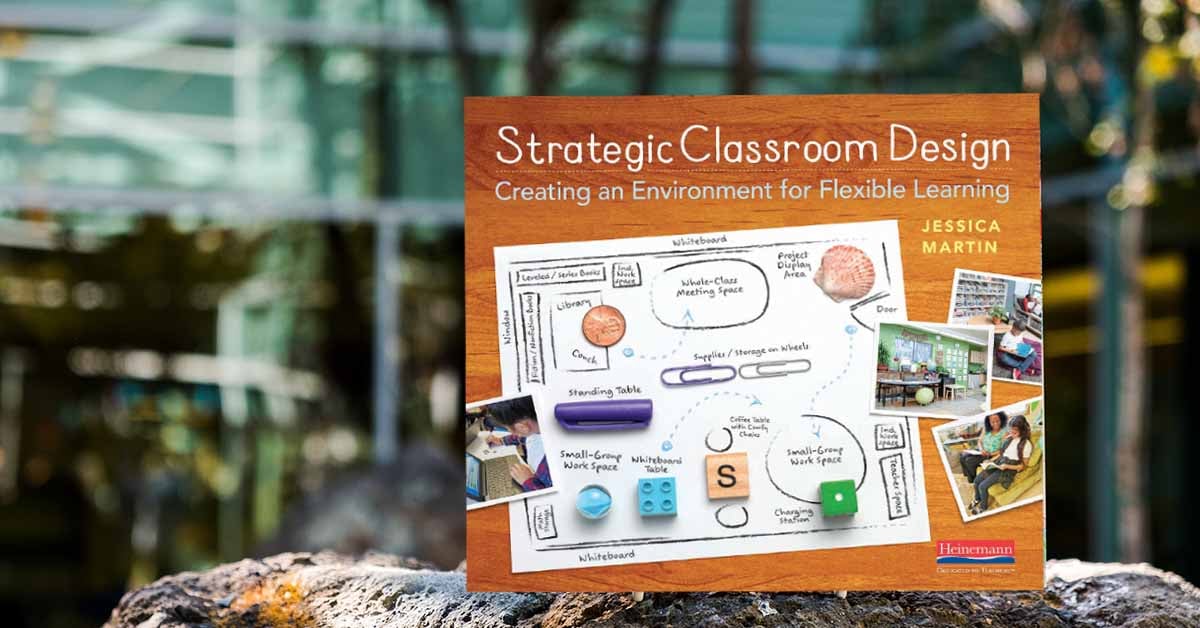 If you were to follow a student through a typical morning at school, you might be surprised by their level of independence or the limited amount of management from their teacher. What is not visible but very present in every moment of their classroom learning experiences are the decisions their teacher has made about classroom design. Their environment is designed with a keen eye toward the type of learning tasks that can happen in flexible learning spaces. This includes lots of space to move, plenty of light, furniture options, and a variety of possible seating configurations, easy access to tools and supplies, and technology that is used to encourage thinking, innovation, and collaboration.
If you were to follow a student through a typical morning at school, you might be surprised by their level of independence or the limited amount of management from their teacher. What is not visible but very present in every moment of their classroom learning experiences are the decisions their teacher has made about classroom design. Their environment is designed with a keen eye toward the type of learning tasks that can happen in flexible learning spaces. This includes lots of space to move, plenty of light, furniture options, and a variety of possible seating configurations, easy access to tools and supplies, and technology that is used to encourage thinking, innovation, and collaboration.
Only a small part of designing a learning space is about beautification and aesthetics. Reimagining a strategic learning space is mostly about being mindful of the evolving needs of learners. An emphasis is placed on safety and belonging so that learners are free to share, create, reflect, and collaborate in a whole group, in small groups, or on their own without fear of rejection or judgment. Additionally, designing a classroom environment means educators invite students to co-design structures and processes so that all stakeholders not just survive, but thrive across the school year.
Your Classroom Design Ignites Engagement
Engagement is ignited when students feel ownership of their classroom environment and play a role in making decisions about how the teaching and learning will occur. The opportunity to engage and collaborate alongside peers in well-imagined classroom spaces is also a chance to learn important skills about boundaries and behaviors.
Your Classroom Design Helps Students Stay on Task
Classroom spaces support students in a variety of ways so they can remain focused on their learning with minimal distractions. With intentional planning these strategically designed areas can help foster social, emotional, behavioral, and cognitive growth and well-being for all learners.
Your Classroom Design Cultivates Collaboration
All of the areas in your classroom, no matter how big or small, can be utilized in strategic
ways. Spending time thinking about how to optimize a whole-group space for the classroom community and how to use all of the smaller, surrounding spaces can cultivate endless and exciting opportunities for inclusive collaboration.
Your Classroom Design Supports Student Achievement
We can build opportunities for all students to experience academic success without shame or blame through the way we design lessons and projects, the variety of spaces we offer, and the kind of access we provide to materials. Many educators agree that what drives the learning space configuration is the type of task, number of students involved in the project, and each student’s role. Ideally, students have multiple opportunities across the day to support their own achievement by making choices about where to work in the room, how to go about tasks, and whether to work individually or collaborate with one another.
…
The above has been adapted from Strategic Classroom Design. Learn more at Heinemann.com
 Follow us on Instagram @heinemannpub to stay up to date on the latest books, your favorite authors, and upcoming events!
Follow us on Instagram @heinemannpub to stay up to date on the latest books, your favorite authors, and upcoming events!
 Jessica Martin (@growingjessica, @groweducators) is a former classroom teacher, a former resident advisor at UCLA’s Teacher Education Program Center X, and a former staff developer at Teachers College Reading and Writing Project, Columbia University. Jessica now leads a small consulting team that partners with K-12 schools in English Language Arts (ELA), Cognitively Guided Instruction (CGI) math, and inquiry-based content-area instruction. She is grateful for the opportunity to collaborate with educators and learning communities committed to co-creating incredible spaces, amplifying student voices, and implementing equitable learning opportunities for all learners. When she is not in schools, you can usually find her with her family on a basketball court shooting hoops.
Jessica Martin (@growingjessica, @groweducators) is a former classroom teacher, a former resident advisor at UCLA’s Teacher Education Program Center X, and a former staff developer at Teachers College Reading and Writing Project, Columbia University. Jessica now leads a small consulting team that partners with K-12 schools in English Language Arts (ELA), Cognitively Guided Instruction (CGI) math, and inquiry-based content-area instruction. She is grateful for the opportunity to collaborate with educators and learning communities committed to co-creating incredible spaces, amplifying student voices, and implementing equitable learning opportunities for all learners. When she is not in schools, you can usually find her with her family on a basketball court shooting hoops.



